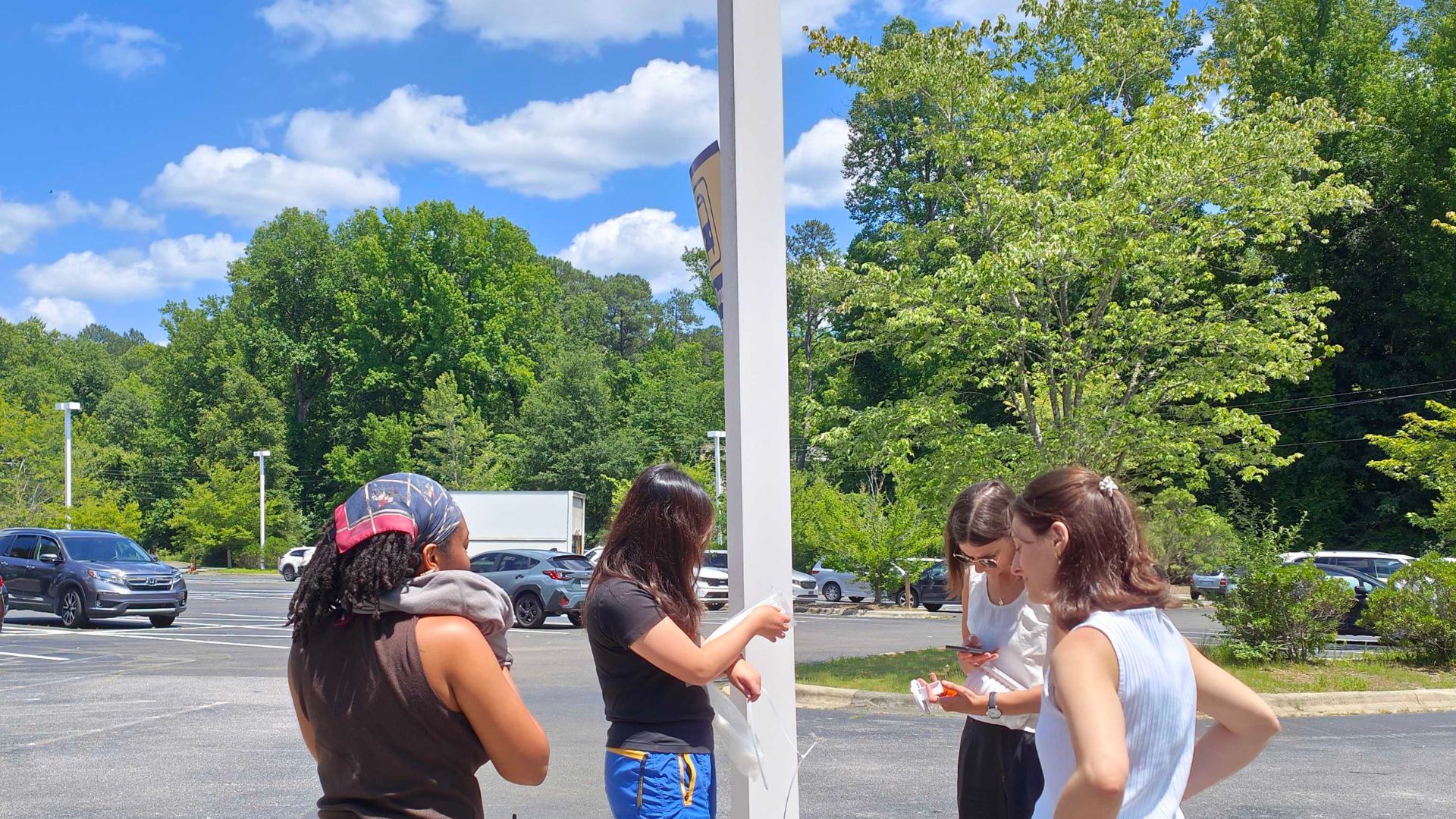
We are excited to share that we have begun installing sensors for our NASA-funded project to explore disparities and solutions to U.S. urban heat stress and climate justice.
Our project uses satellite remote sensing data and a multi-modal modeling approach to understand which areas in a given community are experiencing higher heat stress as a result of historic and present-day environmental injustice. To attain high-resolution (~1 m) data on heat stress, we are developing machine learning and microclimate modeling approaches to estimate mean radiant heat within an urban area. Mean radiant heat is a more fine-grained and representative measure than land surface temperature of how much the human body will be exposed to outdoor urban heat during summer, with consideration of air temperature, humidity and shade of buildings and other structures within a city. Since these models of thermal comfort and stress are developed using a variety of remotely-sensed data on land cover, temperature and humidity, ground-truthing is critical for their accuracy.
These models of thermal comfort are created using input digital models of the city, consisting of ground, buildings and tree canopy, and resolving how these city components interact with solar radiation, air temperature and relative humidity. Currently, these meteorological components can only be obtained at a coarse resolution, often larger than the span of the city itself. By generating air temperature and relative humidity measurements on a fine scale, the potential impacts of the use of this low-resolution data can be examined and increase our insight into how urban design and climate features interact.
Creation of a gridded high-resolution (100m) air temperature and relative humidity data will be done using a sensor network (explained below), combining remotely-sensed land cover and land surface temperature data with our high-density sensor network air temperature and relative humidity points using a machine learning approach.
To accomplish the goal of ground-truthing our high-resolution heat stress models to build a finer model of thermal comfort, the DDL team has begun installing low-cost sensors that measure air temperature and humidity every 10 minutes throughout Durham. For a systematic and complete analysis, obtaining a full cross-section of the city’s temperatures, ranging from the coolest to the warmest areas is necessary. To achieve this, the city temperatures were split into 10 deciles based on land surface temperature.
By combining these ten temperature groups with the four land cover and shade scenarios (vegetated vs. impervious, shaded vs. no shade), a total of 40 sensor locations were identified. This approach ensures the study captures a full spectrum of urban temperature variations, providing valuable insights into the urban microclimate. These 40 sensors will be left on the sites for three months starting from June 2024, with the aim of collecting more than 500k data points for air temperature and humidity. With this data, the project team will be able to quantify the accuracy of our machine-learning models that use remotely-sensed data, and then apply our method to other cities, including Philadelphia, PA; Phoenix, AZ; and Chicago, IL.
This project builds on some of our previous work, like our 2021 Chapel Hill Heat Watch Campaign and the Urban, Environment and Social Inclusion Index. These projects and research from others in the field have established that heat stress is not equally distributed throughout communities: In the U.S., people of color and lower incomes are more likely to live in areas that experience a higher degree of heat exposure.
We are working with partners nationwide, including the Museum of Life and Science, the Pacific Northwest National Laboratory, the University of Pennsylvania, and the Arizona State University School of Politics and Global Studies. We have also convened a Community Advisory Board to advise the direction of our research so that outcomes will be more salient and useful for communities and city-level policymakers.
Stay up-to-date on this NASA-funded project here at our dedicated project page.

Recent Comments